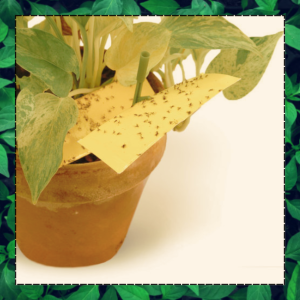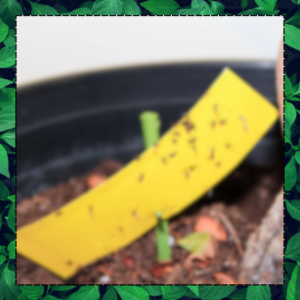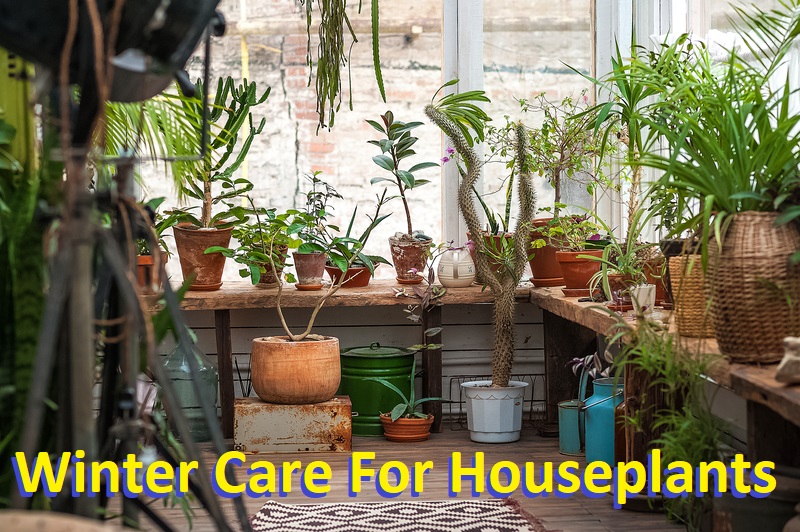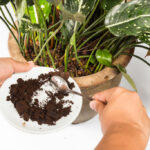HousePlantJoy is supported by our audience. When you purchase through one of our links, we may earn a small affiliate commission. As an Amazon Associate I earn from qualifying purchases. Your cost is not affected.
==================
No one wants bugs on their plants, especially regarding the persistent and bothersome challenge of dealing with gnats in houseplants. The frustration is accurate, and the potential damage to your cherished plants is undeniable if this issue isn’t promptly resolved.
In this comprehensive guide, we’ll navigate the world of “Gnats in Houseplants,” equipping you with the knowledge to prevent and treat infestations effectively. We’ll uncover the characteristics and signs of gnat presence pivotal for proactive intervention. Dive into the reasons behind their attraction – organic debris, wet soil, and light sources – and explore natural eradication methods, including the power of letting the soil dry, employing traps, sanitizing and repotting, and a strategic spray bottle technique.
But our journey doesn’t end there. You can discover preventive measures beyond mere control, including the art of controlled watering, the significance of pots with good drainage, and the importance of inspecting plants before bringing them inside. While gnats might not directly harm your houseplants, their pesky presence can be a nuisance, potentially affecting the overall health of your green companions. It’s time to take proactive steps to ensure your plants survive and thrive in a gnat-free environment.
Gnats in Houseplants, Prevention and Treatment Tips
Gnats can be a nuisance, especially when infesting your beloved houseplants. These tiny flying insects are often mistaken for fruit flies and can quickly multiply, causing damage to your plants. In this blog, we dive into the world of gnats and houseplants. We discuss what causes gnat infestation in houseplants and provide natural methods to eradicate them.
We also explore preventive measures to take to keep these pesky bugs away from your plants in the first place. Lastly, we answer a common question: are gnats harmful to houseplants? Please keep reading to learn how to prevent and treat gnat infestations in your houseplants.
Key Takeaways
Implement preventive measures and early detection for effective gnat control. Consistent monitoring and proper care of indoor plants are crucial in preventing gnat infestations. Understanding the lifecycle and behavior of adult fungus gnats aids in implementing the easiest ways to control them. Creating unfavorable conditions for gnat breeding is key in preventing a fungus gnat infestation. Swift and targeted action against gnats in houseplants is crucial for plant health.
Understanding Gnats in Houseplants
Understanding the lifecycle and behavior of adult fungus gnats in houseplants is crucial for controlling and preventing fungus gnat infestation. These pests thrive in moist environments, making indoor plants vulnerable to infestations. Proper identification is essential for implementing easy ways to eliminate the infestation, such as using bacillus thuringiensis (BT) granules or plastic wrap to create unfavorable conditions for gnat breeding. Consistent monitoring and swift action against gnats in houseplants are also vital for effective control measures.
Characteristics of Gnats
Characterized by their rapid reproduction, adult gnats are attracted to indoor plants emitting carbon dioxide and moisture, where they lay their eggs. These tiny insects, also known as fruit flies, have clear wings and long legs, distinguishing them from other common houseplant pests. Fungus gnat larvae reside in the soil of houseplants, feeding on organic matter and plant roots, leading to a potential fungus gnat infestation.
Signs of Gnat Infestation
Adult fungus gnats flying around indoor plants and the soil surface indicate a potential infestation. If you notice large numbers of tiny flying insects near your houseplants or covering the soil surface, it could signify a significant gnat problem. Another sign of gnat infestation is observing gnats coming from the soil when the plants are watered or disturbed. These are all indicative signs that prompt investigation and action.
Causes of Gnat Infestation in Houseplants
Gnat infestation in indoor plants often stems from the presence of organic matter, creating an ideal breeding ground for adult fungus gnats.
The Role of Overwatering and Light
Overwatering leads to excessively moist soil, providing an environment conducive to fungus gnat infestation. Additionally, proximity to a light source can attract and foster gnats in the surrounding space.
Fungus Gnat Larvae
Introducing new plants, particularly infested ones, may also lead to gnat problems at home. Understanding these causes is crucial for effective prevention.
Role of Organic Debris
Moist soil and organic debris in indoor plants create an ideal fungus gnat infestation environment. The accumulated organic matter and damp soil provide the perfect conditions for gnat larvae to thrive and develop.
The decomposition of organic material in the plant soil acts as a food source for the larvae, aiding their growth. Managing and controlling organic debris within houseplants is crucial to prevent gnat infestation and its associated problems.
Influence of Wet Soil
Persistent dampness in the soil of indoor plants can significantly impact gnat infestation. Overwatering or poor drainage leads to excess moisture, creating an ideal breeding ground for gnat larvae. The moist environment promotes the survival of fungus gnat larvae, exacerbating infestations. Understanding the influence of wet soil on gnat infestation is crucial for implementing effective control strategies.
Effect of Light Source
The positioning of light sources near indoor plants can impact the attraction and behavior of adult fungus gnats. Intense, direct light near houseplants may stimulate gnat movement and reproduction, drawing them closer, especially during evenings and nights. Understanding this influence provides insights into controlling and reducing gnat infestation around indoor plants. Modifying lighting conditions can be an effective way to minimize adult fungus gnat activity.
Natural Methods to Eradicate Gnats
Letting the soil of indoor plants dry entirely between waterings is an easy way to control and eliminate adult fungus gnats. Placing sticky traps around the base of plants can help capture and reduce the adult gnat population. Additionally, introducing beneficial insects like nematodes to the soil can assist in controlling gnat larvae. Incorporating hydrogen peroxide and cinnamon into the soil offers effective home remedies against fungus gnat infestation.
Importance of Letting the Soil Dry
Allowing the soil of indoor plants to dry between watering disrupts favorable conditions for adult fungus gnats and their larvae, preventing infestation. This practice acts as a natural deterrent, creating an inhospitable environment for the survival and reproduction of gnats. Emphasizing the significance of dry soil is essential in managing and preventing fungus gnat infestation, making it one of the easiest ways to control gnats without hassle.
Using Traps Effectively
Maximizing the capture and control of adult fungus gnats is crucial, involving proper placement of sticky traps around indoor plants. Strategic positioning of apple cider vinegar traps near houseplants enhances gnat control. Regular monitoring and replacement of traps ensure continued efficacy. Combining different trap types and placements optimizes effectiveness, mainly when used with other mosquito control methods.
Sanitizing and Repotting as a Solution
As a solution, start by sanitizing the top layer of soil to eliminate adult fungus gnats. Repot the indoor plants in fresh soil to remove gnat larvae and eggs. Keep the soil dry after repotting to prevent new infestations. Additionally, consider removing the top layer of soil and replacing it with fresh soil to control gnats. It’s also important to clean and sterilize the pot before repotting to prevent gnat infestations.
The Spray Bottle Technique
Eradicate gnat larvae in plant soil with a hydrogen peroxide solution—control gnat infestations by spraying dish soap and water on the soil surface. Use neem oil for gnat control. Deter adult gnats by applying a vinegar and water solution to the soil. Implement beneficial nematodes in a spray for gnat larvae control.
Preventive Measures Against Gnats
Maintaining a regular watering schedule prevents soil from becoming overly moist. Placing sticky traps around plants effectively captures adult fungus gnats. Allowing the soil surface to dry out between watering deters gnat infestations. Introducing mosquito dunks in water trays prevents gnat larvae from hatching. Utilizing pots with good drainage and adding a layer of gravel prevents excess moisture, preventing a fungus gnat infestation.
Importance of Controlled Watering
To prevent water accumulation, ensure pots have adequate drainage holes. Water plants at the base to discourage gnat infestations, adjusting watering based on plant needs. Controlling the gnat larvae population is possible by reducing watering frequency. Employ a technique that avoids excess water on the soil surface. This will prevent soil moisture and help in managing fungus gnat infestation effectively.
Role of a Pot With Good Drainage
Selecting pots with proper drainage is crucial in preventing water accumulation. This feature helps maintain soil moisture levels, deterring adult fungus gnats. Ensuring adequate drainage allows excess water to escape, reducing the risk of a fungus gnat infestation. Enhance drainage by adding gravel or rocks at the pot’s base, effectively preventing favorable conditions for gnats. Good drainage prevents waterlogged conditions, inhibiting gnat growth.
Checking Plants Before Bringing Inside
Before bringing plants inside, inspecting them for gnat infestations is crucial. Quarantine and monitor new plants to prevent indoor infestations. Remove any signs of gnat infestation and treat with organic pest control methods. Ensure new plants are free from adult gnats and larvae before indoor placement. This diligent approach can effectively prevent the spread of fungus gnat infestation indoors.
Are Gnats Harmful to Houseplants?
Gnats in houseplants can cause root damage, hinder nutrient absorption, and lead to stunted growth. Gnat infestations can indicate overwatering and potential root rot. These pests disrupt the indoor environment and harm plant care, potentially resulting in plant decline and death.
Gnats in Houseplants: Cultivating a Gnat-Free Haven for Your Green Companions
In the intricate dance between plants and pests, understanding and actively managing gnats in houseplants is a crucial chore for any dedicated plant enthusiast. As we conclude our exploration of this common yet frustrating issue, it’s clear that a gnat-free haven is within reach.
By comprehending the characteristics and signs of gnat infestation, you’ve armed yourself with the knowledge needed for effective prevention and treatment. Organic debris, wet soil, and enticing light sources may attract these unwelcome visitors, but fear not – nature offers solutions. Letting the soil dry, strategically placing traps, employing sanitizing and repotting techniques, and using a spray bottle can bid farewell to gnats.
Taking a step beyond mere eradication, our journey emphasized the importance of preventive measures. Controlled watering, pots with good drainage, and a pre-indoor-entry plant check are your arsenal against future infestations. Remember, while gnats might not be direct assailants, their presence can irk and affect your plants’ well-being.
As you tend to your green companions, cultivating a thriving indoor garden, let the echoes of “Gnats in Houseplants” guide you towards a future where bugs take a backseat and your plants bask in gnat-free glory.
Ready to reclaim your indoor oasis? Start implementing these strategies today and watch your plants flourish. Happy gardening!
Frequently Asked Questions
What are some common causes of gnats in houseplants?
Common causes of gnats in houseplants include overwatering, poor soil drainage, decaying organic matter, and the introduction of new plants. These factors create a favorable environment for gnats to breed and thrive. Proper watering practices and regular soil maintenance can help prevent gnat infestations.
How can I prevent gnats from infesting my houseplants?
To prevent gnats from infesting your houseplants, allow the soil to dry out between watering and avoid overwatering. Remove any standing water from plant saucers and use a well-draining potting mix. Use sticky traps or biological controls like nematodes as preventive measures against gnat infestations.
What are some natural remedies for getting rid of gnats in houseplants?
Sticky traps can effectively catch adult gnats, while a mixture of water and apple cider vinegar can kill larvae in the soil. Sprinkling cinnamon on the soil helps prevent gnat larvae from hatching. When mixed with water and sprayed onto the soil, Neem oil kills larvae and repels adult gnats.
Are there any chemical treatments that can effectively eliminate gnats from houseplants?
Yes, there are chemical treatments available for effectively eliminating gnats from houseplants. Insecticidal soap and neem oil can be effective chemical treatments for controlling a gnat infestation. However, using these treatments cautiously and following the label’s instructions is essential. Natural remedies like sticky traps and hydrogen peroxide can also effectively control gnats in houseplants.
Grow with Us: Explore Plant Bliss on HouseplantJoy’s Social Channels!
Unlock a world of green wonders and join our thriving plant community! ? Follow us on Facebook, Instagram, Pinterest, Twitter, and TikTok. Discover captivating content and insightful product reviews, and connect with fellow plant enthusiasts. Your journey to plant joy begins here – click, follow, and let the green magic unfold! ?✨
















